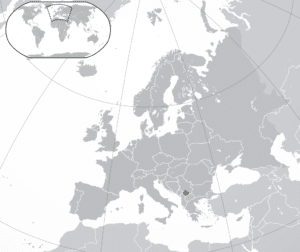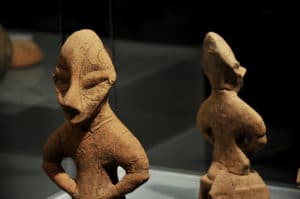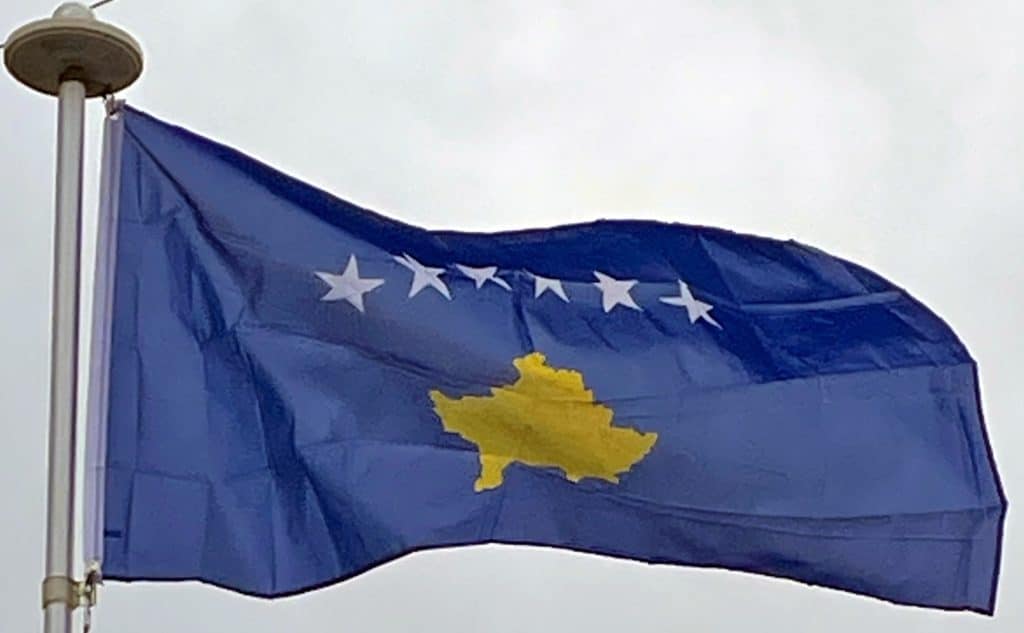Introduction:
Kosovo, officially the Republic of Kosovo, is partially-recognized state and disputed territory in Southeastern Europe. On 17 February 2008, Kosovo unilaterally declared its independence from Serbia. It has since gained diplomatic recognition as a sovereign state by 98 UN member states.

Geographically defined in an area of 10,887 km2 (4,203 sq mi), Kosovo is landlocked in the center of the Balkans and bordered by the uncontested territory of Serbia to the north and east, North Macedonia to the southeast, Albania to the southwest and Montenegro to the west. It possesses remarkable varied and diverse landscapes for its size by climate along with geology and hydrology. Most of central Kosovo is dominated by the vast plains and fields of Metohija and Kosovo. The rugged Prokletije and Šar Mountains rise in the southwest and southeast, respectively.
Inhabited since Neolithic times, Kosovo fell under the control of first the Roman Empire and then remained part of the eastern Roman, or Byzantine, empire for over a thousand years before being absorbed into the Ottoman Empire. The fall of the Ottomans in Europe left Kosovo divided between Serbia and Montenegro until the end of World War II and its incorporation into Yugoslavia.

Tensions between the Albanian and Serbian communities continued throughout the Yugoslav years and the breakup of Yugoslavia brought matters to a state of war in 1998 and 1999 which resulted in the withdrawal of the Yugoslav army. This was followed by United Nations administration and the declarations of independence in 2008. Serbia continues to not recognize the independence of Kosovo, instead considering it to be an autonomous province.
History:
Early Development:
Human settlement during the Paleolithic has not yet been confirmed by archaeological expeditions. The earliest archaeological evidence of organized settlement, which have been found in Kosovo, belong to the Neolithic Starčevo and Vinča cultures. Vlashnjë and Runik are important sites of the Neolithic era. The rock art paintings at Mrrizi i Kobajës, near Vlashnjë are the first find of prehistoric art in Kosovo. Among the finds of excavations in Neolithic Runik is a baked-clay ocarina, which is the first musical instrument to ever be recorded in Kosovo. The beginning of the Bronze Age coincides with the presence of tumuli burial grounds in western Kosovo as in the site of Romajë.

The Dardani were the most important Paleo-Balkan tribe in the region of Kosovo. A wide area which consists of Kosovo, parts of Northern Macedonia and eastern Serbia was named Dardania after them in classical antiquity. Their identification as either an Illyrian or Thracian tribe has been a subject of debate. The Dardani retained an individuality and succeeded to maintain themselves as a community after Roman conquest and they played an important role in the formation of new groupings in the Roman era.
The Roman state annexed Dardania by the first century CE. The importance of the area lay in its mining potential (metalla Dardana) which was heavily exploited in the CE centuries as highlighted by the large mining complex of Municipium Dardanorum and the designation of part of the region as an imperial mining district. Kosovo was part of two provinces, Praevalitana and Dardania. Ulpiana is the most important municipium which developed in Kosovo. It was refounded as Justiniana Secunda under Justinian in the 6th century CE.
Middle Ages:
In the next centuries, Kosovo was a frontier province of the Byzantine Empire. The region was exposed to an increasing number of ‘barbarian’ raids from the 4th century AD onwards, culminating with the Slavic migrations of the 6th and 7th centuries. The First Bulgarian Empire acquired Kosovo by the mid 9th century, but Byzantine control was restored by the late 10th century.
